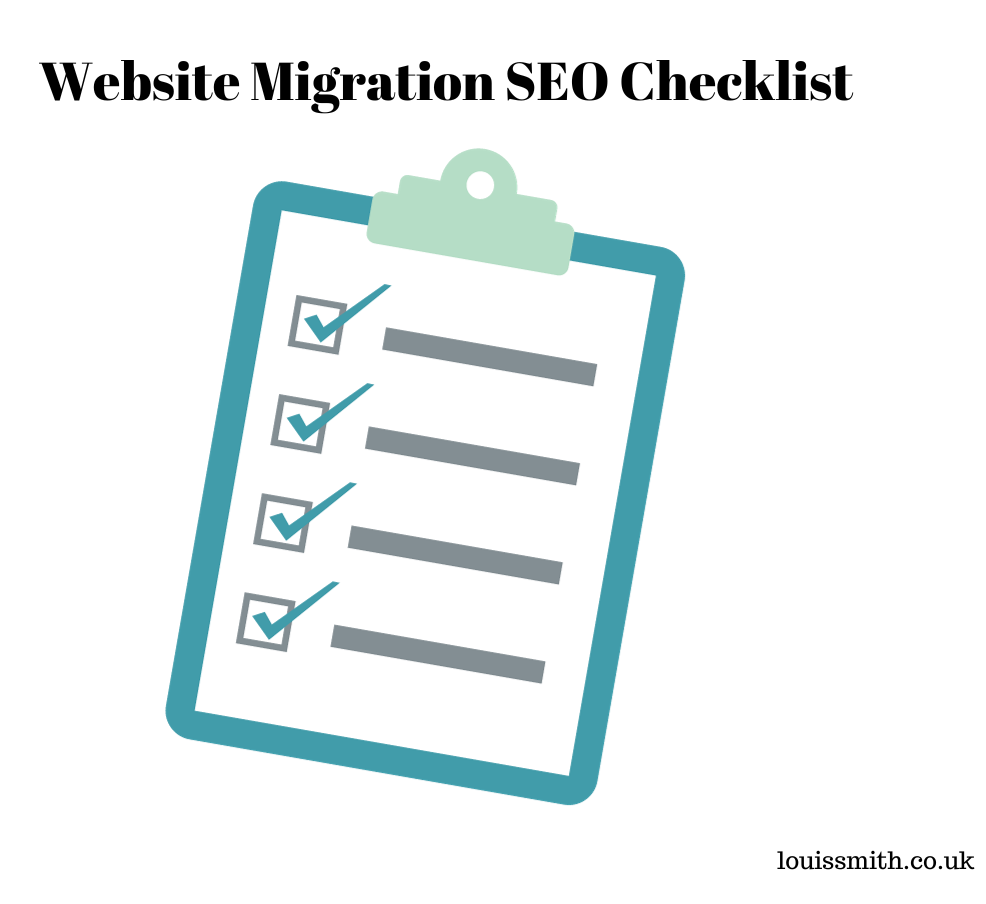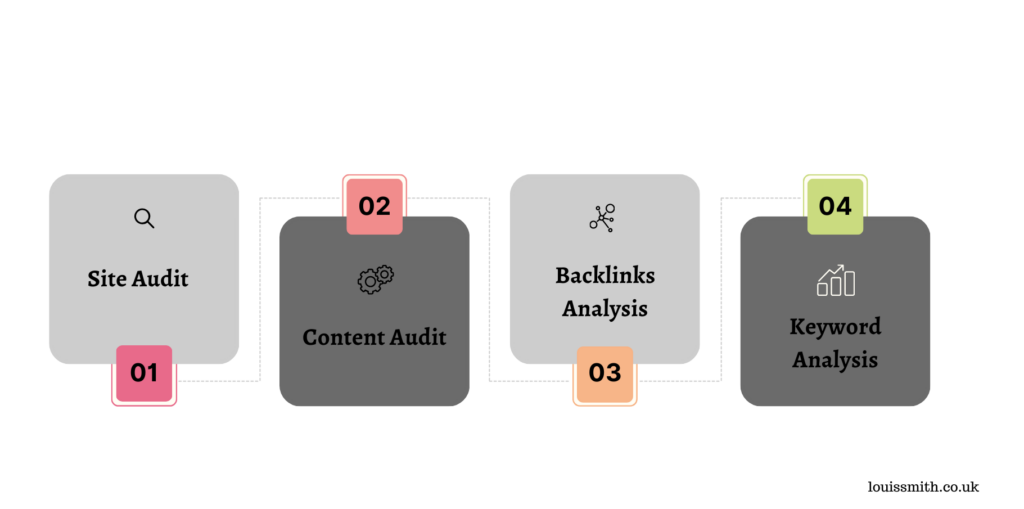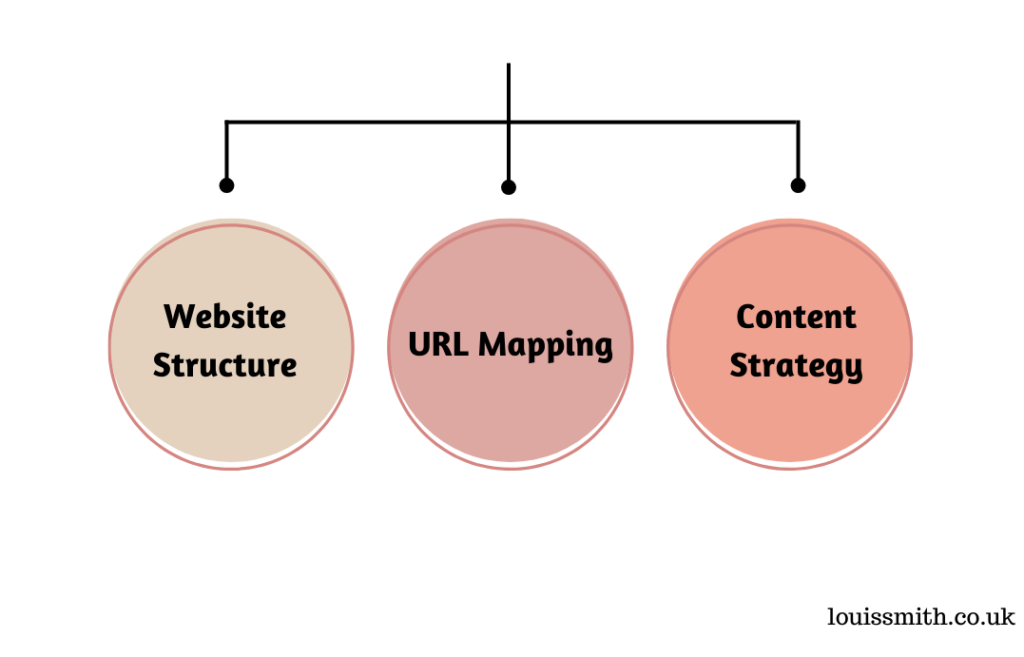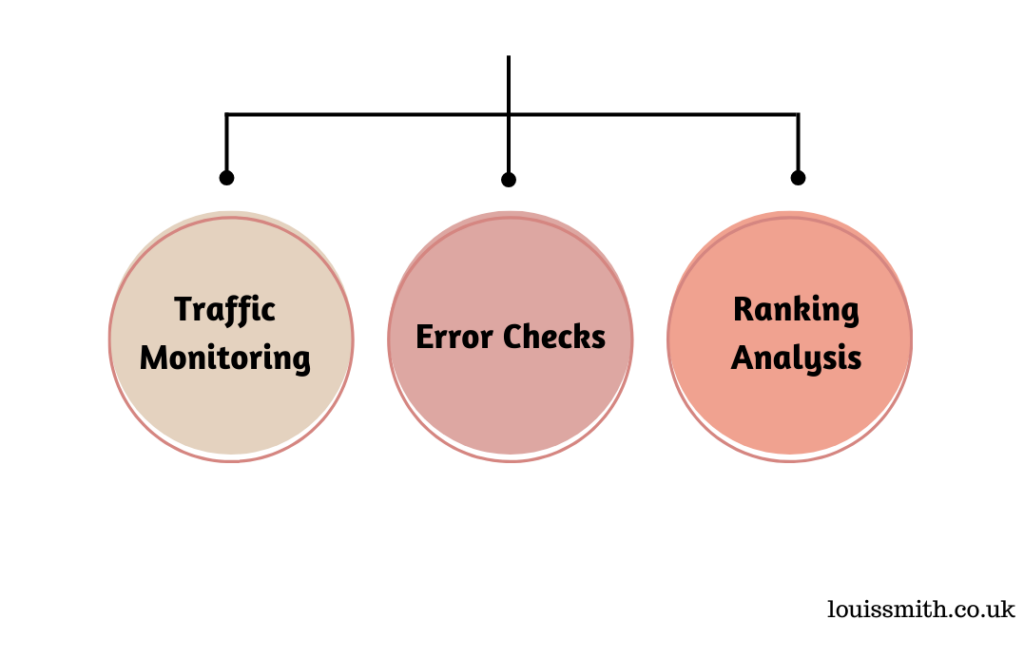A Friendly Guide for Smooth Transitions 📈

We often neglect to pay attention to SEO during a website migration.
More often than none, we’re focused on transferring website data and pay little or no attention to how it affects the website’s SEO ranking.
It’s important to pay close attention to SEO during your website migration. This will ensure that your site maintains or even improves its search engine rankings after migrating.
I have created this guide from experience to guide you through the process of creating an SEO-focused website migration checklist.
I understand the importance of search engine optimisation. And I know that a poorly executed website migration can do more harm than good.
To avoid potential pitfalls and keep your hard-earned search rankings intact, it is essential to create a website migration SEO checklist. One that outlines the necessary steps for a successful migration.
This will ensure that you’re not only maintaining your site’s search engine position but also improving your website’s overall performance.
Let’s dive in!
Pre-Migration Analysis
Before embarking on a website migration, it’s essential to perform a thorough pre-migration analysis.
From experience, I would break this down into four key sub-sections:

#1 Site Audit
A site audit is a comprehensive examination of your existing website to identify any technical SEO issues that should be addressed before the migration.
This includes checking for broken links, duplicate content, and assessing the site’s overall performance. I would recommend using tools like Screaming Frog and Google Search Console to help you identify potential issues.
#2 Content Audit
Content is the backbone of any website, and assessing the quality of your existing content is vital in maintaining your search engine rankings post-migration.
In my experience, performing a content audit entails:
- Identifying high-performing and low-performing content
- Determining content gaps and opportunities for improvement
- Ensuring consistency in tone, style, and formatting
- Evaluating metadata, such as meta titles and descriptions
Remember that quality content not only improves rankings but also adds value to your users.
#3 Backlinks Analysis
Backlinks play an essential role in SEO, and it’s important to understand your site’s current backlink profile before the migration.
I would suggest using tools like Ahrefs or Moz Link Explorer to:
- Identify valuable backlinks that you want to maintain
- Discover potentially harmful or spammy links that may need to be disavowed
- Monitor your site’s overall Domain Authority (DA) and Page Authority (PA)
With this information, you can ensure a smooth migration without losing valuable backlinks in the process.
#4 Keyword Analysis
Lastly, conducting a keyword analysis helps you understand which keywords are driving traffic to your site and which ones need to be prioritised during the migration.
By using tools like Google Keyword Planner or SEMrush, you can:
- Identify core keywords related to your niche
- Discover new opportunities for targeting long-tail keywords
- Assess the competitiveness of your target keywords
This information will help inform your content strategy and site architecture for a successful migration.
Remember, using a friendly tone in your content can make it more engaging and user-friendly, leading to higher rankings and improved user experience.
Planning The Migration
In this section, I will outline the three key sub-sections to consider during the planning phase:

#1 Website Structure
The first step in planning the migration is understanding the current structure of your website. You need to have a clear picture of how the pages are organised and interconnected.
To do this, you can create a visual representation of the site structure, such as a sitemap or a flowchart.
This will help you identify any potential issues or areas for improvement, as well as help you plan the new structure for the migrated website.
#2 URL Mapping
Next, you need to map the old URLs to the new ones. This ensures that users and search engines can find your content after the migration.
URL mapping involves creating a list of all the current URLs on your website and determining what their new counterparts will be. It’s important to implement proper redirect rules to avoid any broken links and prevent any negative impact on your site’s SEO.
To do this effectively, you can use tools like Semrush to help identify any issues and streamline the process.
#3 Content Strategy
Finally, focus on the content strategy for the migrated website. This involves reviewing your current content, identifying gaps, and defining opportunities for improvement.
Here is a checklist that you can follow;
- Audit your existing content, checking for quality, relevance, and performance
- Determine which content can be Optimised, updated, or removed
- Identify topics and keywords that can drive organic traffic and improve your site’s authority
- Plan and create new content that aligns with your overall business goals
During the planning phase, it’s important to be flexible, proactive, and thorough in your approach. By focusing on the Website Structure, URL Mapping, and Content Strategy, you can ensure a successful migration that helps improve your site’s overall performance and UX.
Technical Preparation
Technical preparation involves the following steps:

#1 301 Redirects
Setting up proper 301 redirects is crucial in maintaining the SEO value of existing pages. By implementing these redirects, you’ll be guiding search engines and users from the old URLs to the new ones.
This will help preserve the page rankings and avoid any potential loss in traffic. It’s a good idea to create a comprehensive list of old and new URLs to map out the redirection strategy.
#2 XML Sitemap
An updated XML sitemap is a valuable tool for search engines to discover and index the new URLs on your website. Create a new sitemap that includes all the updated URLs and submit it to Google Search Console and other search engines.
This will speed up the process of indexing the migrated website and help in maintaining the site’s visibility in search results.
#3 Robots.txt File
The robots.txt file plays an essential role in directing search engine crawlers on which pages to index and which to ignore.
Make sure to review and update your robots.txt file before launching the migrated website. This will ensure that all the necessary pages are indexed while the irrelevant or duplicate content is kept out of search results.
Migration Process
As we dive into the migration execution process, I would like to highlight two important sub-sections:

#1 Test Migration
Before going live with the migration, it’s important for you to perform a thorough test.
By creating a staging environment, you can ensure that all the critical components of your website are functioning as expected. You also need to pay close attention to URL redirects, site structure, and potential SEO issues that may arise during the test migration.
Some key points to consider during test migration are:
- Ensure that all redirects are working as intended.
- Review updated page titles and meta descriptions for accuracy and proper formatting.
- Check that any plugins or integrations are appropriately connected and functioning.
- Identify broken links or images and fix them.
Remember that a test migration is crucial for identifying any potential issues. Addressing them at this stage can save you a lot of headaches down the road.
#2 Live Migration
After thoroughly testing and addressing any issues, it’s time to proceed with the live migration.
You can follow these steps to ensure a smooth transition:
- Schedule the live migration: Communicate with your team and choose a time when site traffic is typically low to minimise potential downtime and its impact on visitors.
- Backup your current website: Before making any major changes, it’s important to create a backup of your current website. This is in case you need to roll back to the previous version.
- Monitor the migration process: Keep a close eye on the migration as it unfolds, addressing any issues that may arise during the process.
- Test the live site: After the migration is complete, you should thoroughly test the newly migrated site to make sure everything is functioning correctly.
Post-Migration Activities

#1 Traffic Monitoring
One of the first things I do after migration is to keep an eye on the website’s traffic. I use tools like Google Analytics.
By doing this, I can easily identify any significant changes in user behaviour, such as;
- An increase in bounce rates
- A decrease in page views
- Unusual shifts in traffic sources
If I notice any of these issues, I will usually take a second look and apply necessary adjustments to maintain and improve the site’s performance.
#2 Ranking Analysis
Another essential post-migration activity is to analyse your website’s keyword rankings. To ensure that your site maintains its search engine visibility, you can track keyword rankings before and after the migration.
By comparing these results, you can easily determine if your website’s SEO has been negatively impacted and take appropriate actions to remedy any issues.
Tools like Semrush can help track and analyse your site’s rankings. It allows you to monitor its performance and make adjustments as needed closely.
#3 Error Checks
Finally, it’s important for you to carry out thorough error checks on the migrated site. Identifying and fixing any errors will help you maintain your site’s SEO health and minimise any disruptions in user experience.
You can use crawling tools like Google Search Console to identify and fix any crawl errors. This will help you make sure that your site remains fully indexed and accessible by search engine spiders.
GET IN TOUCH
Schedule an SEO session and get started on the path to grow your eCommerce store
You’re just one click away from improving your product rankings, increasing sales, and growing your brand’s market share against competitors.

